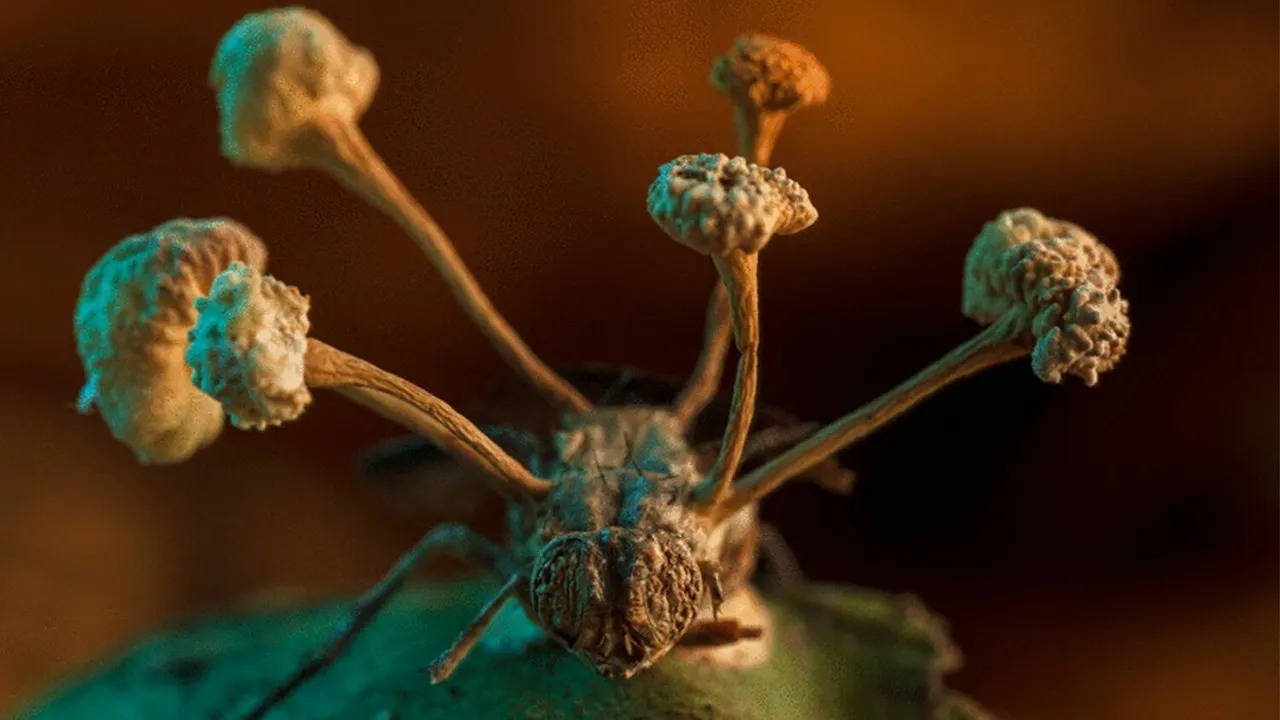
[ad_1]
In a groundbreaking discovery at the Natural History Museum in London, researchers have unearthed a 407-million-year-old fungus fossil, Potteromyces asteroxylicola, from the Rhynie Chert in Scotland. This ancient microbe, paying homage to renowned mycologist Beatrix Potter, is the oldest evidence of fungi causing diseases.
Potteromyces asteroxylicola was found infecting the ancient plant Asteroxylon mackiei, showcasing a predator-prey interaction that occurred while the plant was alive.Dr. Christine Strullu-Derrien, lead author of the study and Scientific Associate at the Natural History Museum, explains that while other fungal parasites have been found in the area, this marks the first case of one causing disease in a plant.
The unique reproductive structures of Potteromyces, known as conidiophores, stood out with their unusual shape and formation, leading to its designation as a new species. A second specimen, discovered in the collections of the National Museums of Scotland, further solidified its place as one of the oldest ancestors of disease-causing fungi.
Beatrix Potter’s legacy as a mycology enthusiast and scientific illustrator adds an extra layer of significance to this discovery. The findings, published in Nature Communications, not only provide insights into the evolution of major fungal groups but also pay tribute to Potter’s dedication to the world of fungi.
Dr. Strullu-Derrien notes the potential for Potteromyces to unlock secrets about fungal evolution, emphasizing the importance of advancements in technology like confocal microscopy. The Natural History Museum’s ongoing exploration of the Rhynie Chert continues to reveal hidden treasures, with Potteromyces standing as a testament to the wealth of knowledge waiting to be discovered.
This ancient fungal pathogen serves as a fascinating echo from the past, shedding light on the intricate interactions of life on Earth and adding a new chapter to the legacy of Beatrix Potter and her contributions to mycology.
Potteromyces asteroxylicola was found infecting the ancient plant Asteroxylon mackiei, showcasing a predator-prey interaction that occurred while the plant was alive.Dr. Christine Strullu-Derrien, lead author of the study and Scientific Associate at the Natural History Museum, explains that while other fungal parasites have been found in the area, this marks the first case of one causing disease in a plant.
The unique reproductive structures of Potteromyces, known as conidiophores, stood out with their unusual shape and formation, leading to its designation as a new species. A second specimen, discovered in the collections of the National Museums of Scotland, further solidified its place as one of the oldest ancestors of disease-causing fungi.
Beatrix Potter’s legacy as a mycology enthusiast and scientific illustrator adds an extra layer of significance to this discovery. The findings, published in Nature Communications, not only provide insights into the evolution of major fungal groups but also pay tribute to Potter’s dedication to the world of fungi.
Dr. Strullu-Derrien notes the potential for Potteromyces to unlock secrets about fungal evolution, emphasizing the importance of advancements in technology like confocal microscopy. The Natural History Museum’s ongoing exploration of the Rhynie Chert continues to reveal hidden treasures, with Potteromyces standing as a testament to the wealth of knowledge waiting to be discovered.
This ancient fungal pathogen serves as a fascinating echo from the past, shedding light on the intricate interactions of life on Earth and adding a new chapter to the legacy of Beatrix Potter and her contributions to mycology.
[ad_2]
Source link
